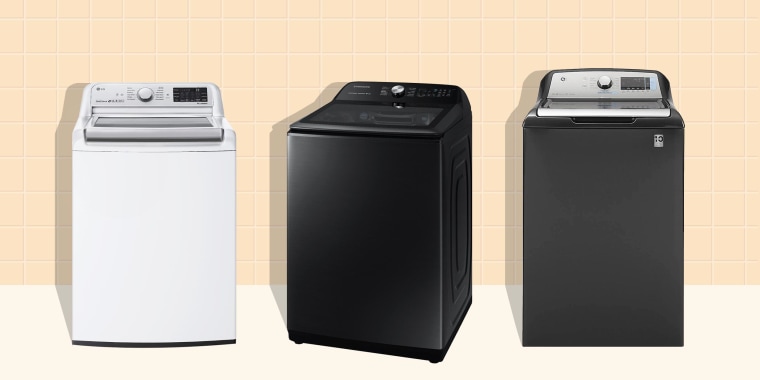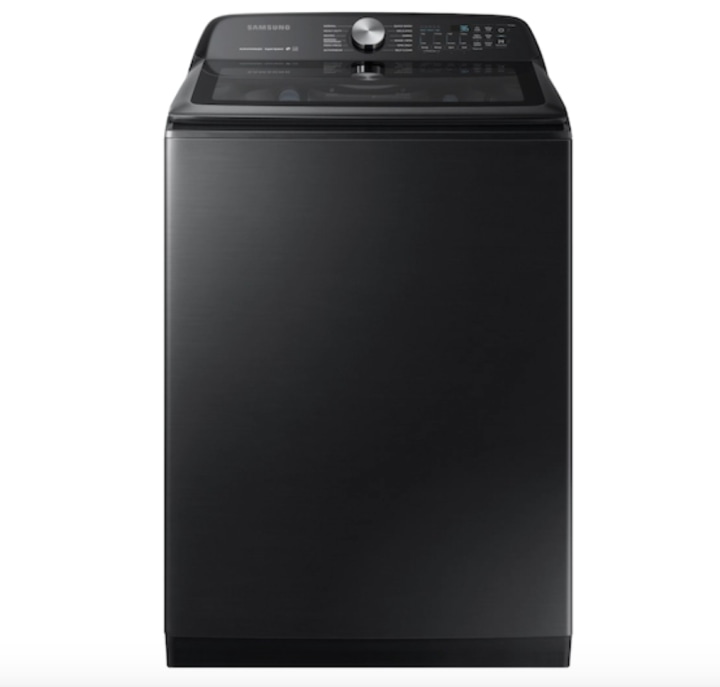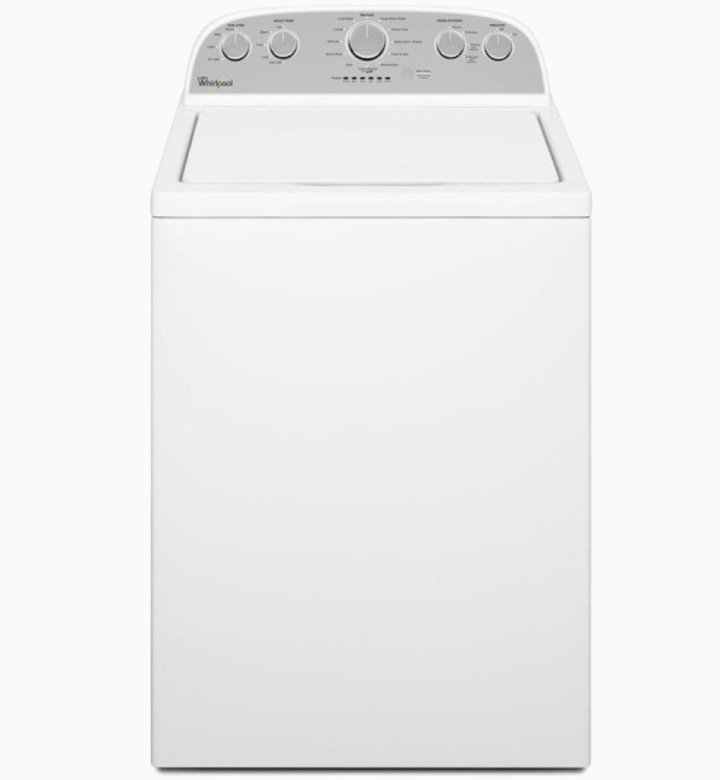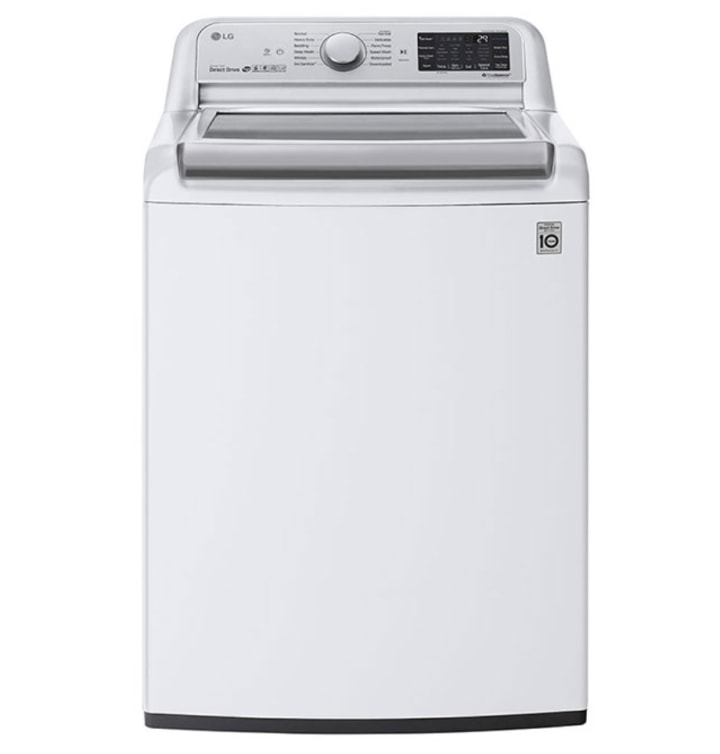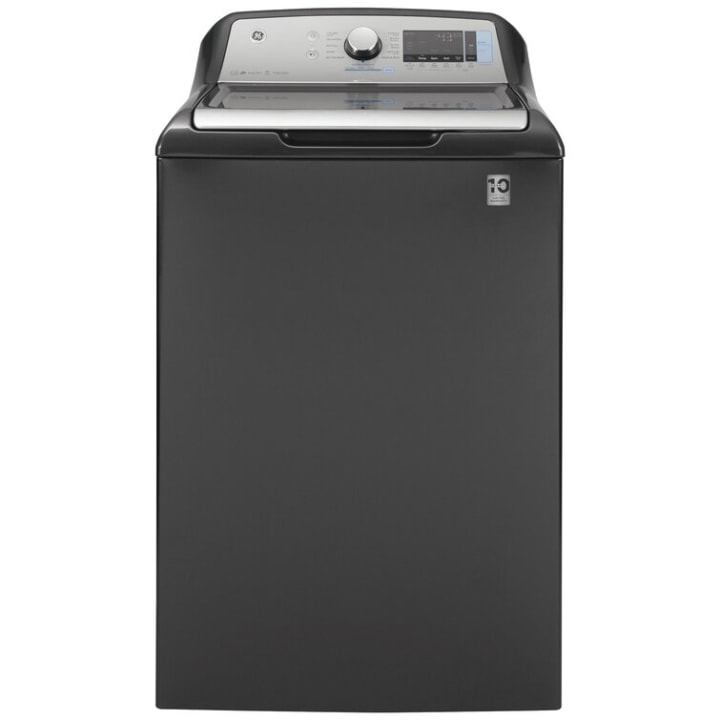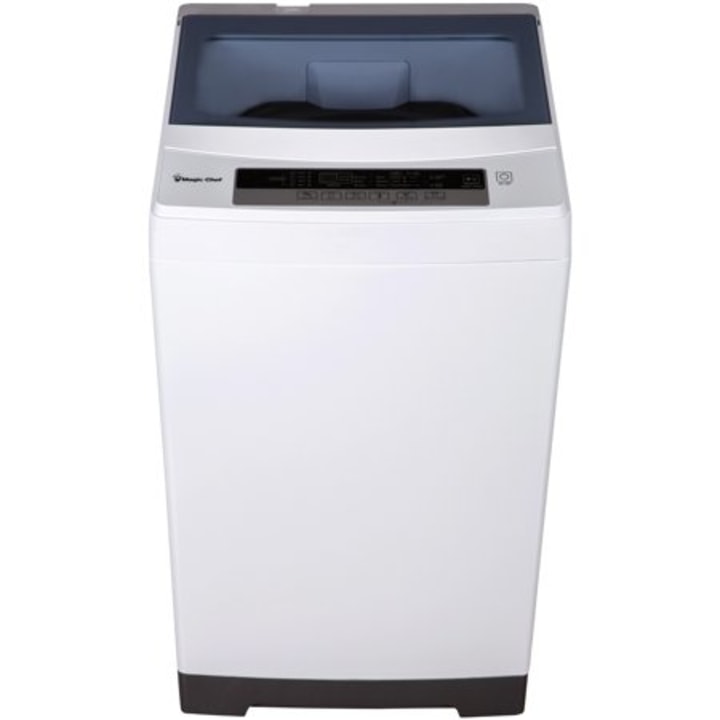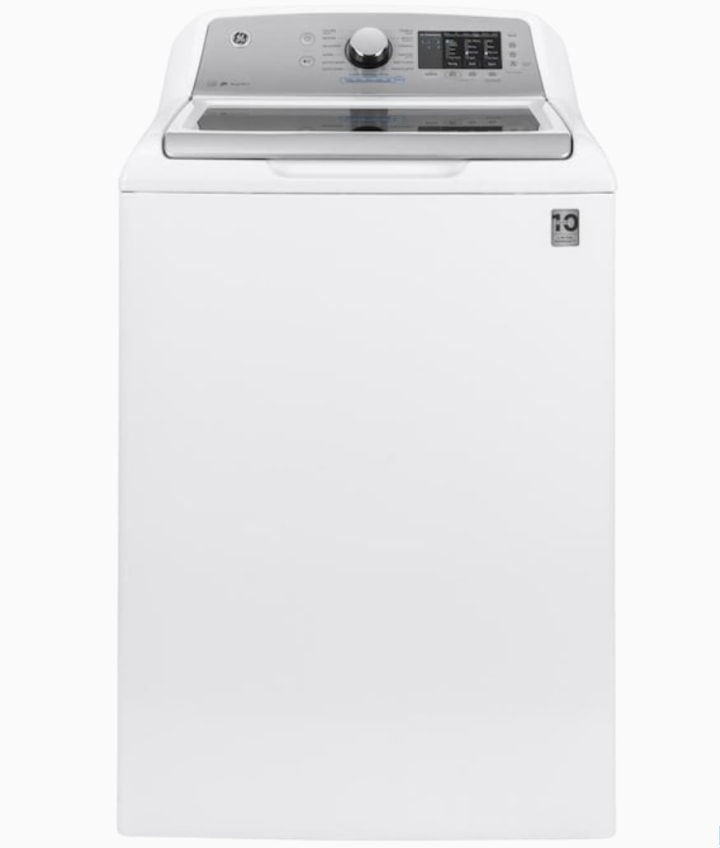Washing machines continue to improve over time, with many washers now sporting portable, high-tech and customizable features to make laundry day even easier. When it comes to revamping your laundry room, there are two main types of washing machines that you can choose from: top-load and front-load washers. While front-load washers are more in-demand due to their energy-efficiency and ability to be stacked, top-load washing machines were in control of the laundry scene when they were first introduced in 1947, and many people still prefer them to their contemporary alternatives.
With so many different washing machines on the market today, how do you shop for the right top-load washing machine for you? Experts told us it’s best to consider key features like capacity, size and cost when determining which top-load washer fits your lifestyle. And while top-load washers are typically easier to clean and don’t usually harbor as much bacteria as their front-load counterparts, it’s also important to consider how to efficiently clean them — and how often.
To help you get started, we included some highly rated options below, along with expert shopping tips and recommendations.
LEARN MORE Features that matter | Top-load versus front-load | Cleaning your washing machine
Top-load washing machines to shop this year
Based on guidance we got from experts, we compiled some of the most highly rated top-load washers available right now — on top of minding expert recs, we took into account the washer’s cost, features, capacity and efficiency.
Overall top-rated top-load washer: Samsung
Samsung Top Load Washer with Super Speed
If you’re looking for a well-performing, high-efficiency washer at a reasonable price point, this top-loading machine from Samsung can be a solid option. Spacious with a capacity of 5 cubic feet, it includes a Super Speed setting that cuts down the washing time of a full load to 36 minutes. It also includes a built-in water faucet that lets you rinse and pretreat stained clothes using your favorite stain removing treatment. In what Samsung calls an ergonomic design, the tub sits four inches higher than standard top-load washers, making it easier to reach the bottom of the washer tub. The Samsung washer boasts a 4.6-star average rating from over 2,000 reviews on Best Buy.
Top-rated affordable top-load washer: Whirlpool
Whirlpool 4.3 cu. ft. High-Efficiency White Top Load Washing Machine
A more affordable-yet-high-performing option, this machine from Whirlpool offers a Quick Wash cycle can wash smaller loads in as little as 28 minutes, a Presoak option that lets you add an extra 30 minutes before the normal cycle starts to soak soiled or stained items and a Deep Water wash that adds more water to help break down stains. This washer earned a 4.4-star average rating from more than 25,000 reviewers at The Home Depot.
Top-rated large capacity top-load washer: LG
LG 5.5 Cu. Ft. High-Efficiency Smart Top-Load Washer
With an impressive 5.5-cubic-foot capacity — the largest capacity on our list — this large top-load washer from LG allows you to fit a comforter and full set of king-size bedding in a single load, according to the brand.The washer, which boasts a 4.6-star average rating from over 1,000 reviewers on Best Buy, can also connect to Google Assistant and Amazon Alexa, so you can start a load of laundry with a simple voice command and receive notifications using the SmartThinQ app on your smartphone.
Top-rated smart top-load washer: GE
GE 5.2 cu. ft. High-Efficiency Diamond Gray Top Load Washing Machine
This GE washer’s built-in Wi-Fi feature lets you monitor and control your load of laundry from anywhere while receiving real-time updates and alerts using SmartHQ smartphone app. The washer also allows you to customize the water-fill levels at the touch of a button so you can fill the tub with the amount of water you want for your wash, while the smart detergent dispenser stores up to 75 ounces of detergent and indicates when your reservoir is low. The washer received a 4.2-star average rating from nearly 2,000 Home Depot reviewers.
Top-rated portable top-load washer: Magic Chef
Magic Chef 1.6 cu. ft. Compact Top Load Washing Machine
This Magic Chef compact washer — which features rollers on the bottom for easy movement — has a see-through window and LED display. You can choose between three water levels, three temperature settings and six wash programs to control the cycle. Inside, the washer includes a stainless steel tub and detergent dispenser. The washer earned an average 4.6-star rating over more than 1,000 reviews at The Home Depot.
Top-rated stain removing top-load washer: GE
GE High-Efficiency White Top Load Washing Machine with FlexDispense
If you prioritize cleaning and stain removing performance over anything else, this GE top-load washer features a Tide PODS dispenser, a stain removal guide and a Sanitize with Oxi cycle (which uses an Oxi additive to boost the performance of your detergent) designed to tackle difficult stains. The stain removal guide option lets you indicate one of five most common stains, including wine and blood stains, and provides preset modifications like prewash and soak on each wash cycle. Meanwhile, if your go-to detergent source is Tide PODS, a dedicated water jet pierces the detergent pack while a shower of water activates the detergent for a faster activation and more cleaning power, according to the brand. The washer currently has a 4.4-star average rating from more than 3,000 Lowe’s customers.
What to consider when shopping for a top-load washing machine
Experts agree that how much volume it can handle and the space necessary to store it are top considerations when shopping for a top-load washer.
- Capacity: Top-load machines typically equip big tubs that hold heavier loads of laundry — most top-loaders support an average capacity of 4 cubic feet to 5.2 cubic feet, with larger ones having 6 cubic feet or more.
- Space: Unlike front-load washers, top-load machines can’t be stacked with a dryer to save space — factor in the space needed to store it in your house, especially if you want a dryer by its side.
- Efficiency: Eco-minded shoppers are more likely to invest in front-load washers since they use less water and energy per cycle, according to the experts we consulted. However, you can still shop for an energy efficient top-load washer by looking for Energy Star certified and high-efficiency (HE) labels, which means they don’t have a center-post agitator like traditional top-load machines and therefore use less water.
- Cost: Top-load washers “can be purchased for roughly $100-300 less than front-load washers, depending on the model and features,'' said Jay Ahmed, a laundry merchant at The Home Depot. They also cost less to repair, but they may also need to be repaired more frequently than front-load washers.
What’s the difference between top-load and front-load washers?
While they have the same general function, top-load and front-load washing machines have some key differences that could determine which one will work best for you. The biggest difference between front-load and top-load washing machines is their energy efficiency and how much water they use. If you’re looking for a more eco-friendly option, the front-load washing machine is likely a better match, but “if your focus is ease, durability and speed within your laundry routine, you may want to consider the top-load washing machine,” said Kristiana Laugen, a home expert at Handy.
“Front-load washers use less water due to the rotation of the drum, which drags the clothes through a shallower pool of water and detergent,” explained Ron Shimek, president of appliance repair service Mr. Appliance. Top-load washing machines, on the other hand, need to use a “deeper pool to ensure that clothes get wet during the cycle, therefore needing more water to do so,” he explained.
Top-load washing machines “tend to be more user friendly and provide quicker washes,” noted Laugen. Since they don’t require people to bend down in order to fill and empty them, top-load washers can be a good option if you have back or body pain, and it’s also much easier to stop and add clothes mid-cycle, like a forgotten item at the bottom of the hamper — a front-load washer, which requires pressing buttons and waiting for the door to unlock.
Front-load washing machines typically cost more, but most can be more cost efficient in the long-term because they require less water and energy than the top-load machines. “Because the laundry is loaded from the front, the front-load washing machines can also save you space by stacking them in a closet or laundry room,” said Laugen, adding that their tumbling motion may benefit gentler washes.
How to clean a top-load washing machine
To fully clean a top-loading washing machine, first make sure the machine and the dispensers don’t have any leftover detergent. Then, fill up the machine with water using the hottest and longest wash cycle to ensure “all of the bacteria, dirt and mildew will be broken down in the cleaning process,” said Laugen. Add four cups of white vinegar into the drum and let the vinegar and water sit for an hour with the lid open before restarting the wash cycle. Then “restart the cycle and let it run to fully clean the drum and wash away any leftover dirt,” she explained.
You’ll need to repeat a similar process to get rid of the vinegar smell — set the machine to the hottest wash cycle and let the drum fill up with water again. Instead of adding vinegar, “add one cup of baking soda to the water, which will help eliminate odors and any remaining bacteria or residue from the first wash,” said Laugen.
To clean the outside of the machine, Shimek suggested using a damp microfiber cloth and an old toothbrush. “Gently wipe down the control panel and knobs, and then the top, front and sides of the machine,” he said. In general, Shimek said washing machines should be thoroughly cleaned at least twice a year, or every three months if you live in a hard water area.
Cleaning a top-load versus front-load washer
Laugen noted top-load washers are typically easier to clean than front-load machines because “they’re less likely to grow mold and mildew” — front-load washing machine typically have a rubber piece in the front that can host the remnants of detergent and water that get stuck in the tumbling cycles, “creating a damp and dark area for bacteria to thrive.” To prevent bacteria growth and odors, front-load washing machines need to be cleaned more thoroughly and more frequently than top-load washers.
Catch up on Select's in-depth coverage of personal finance, tech and tools, wellness and more, and follow us on Facebook, Instagram and Twitter to stay up to date.
